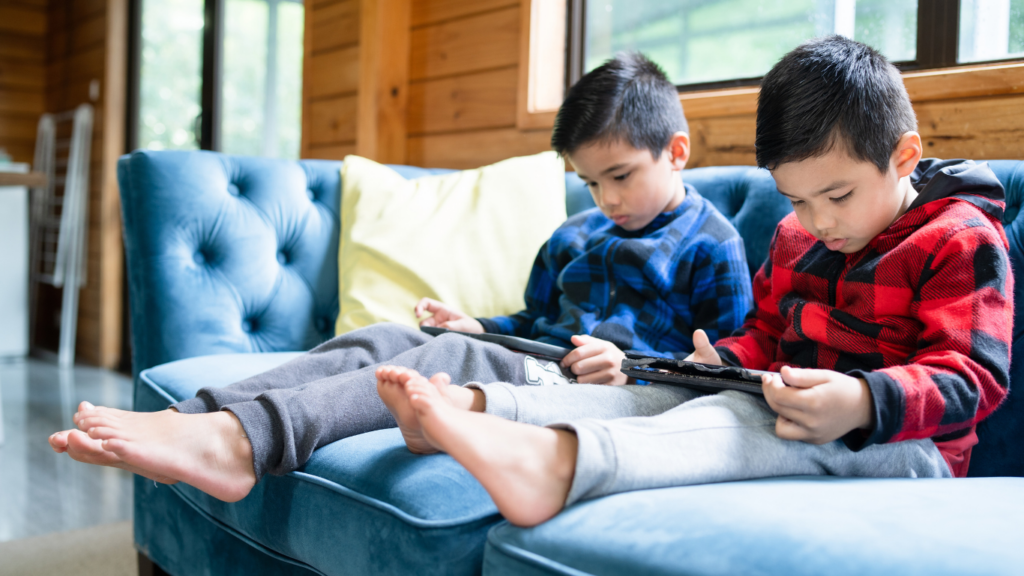As a parent, I’ve often wondered how to strike the right balance with screen time for young kids. In today’s tech-driven world, screens are everywhere—tablets, TVs, smartphones—and they can be both a blessing and a challenge. While they offer endless learning opportunities, too much screen time can impact a child’s development and well-being.
Understanding The Challenges Of Screen Time
- Balancing technology use and development is complex for young kids. Excessive exposure to screens, like tablets or smartphones, can affect cognitive, social, and physical growth.
- Research from the American Academy of Pediatrics links prolonged screen use to issues such as reduced social interactions or delays in language development.
- Distinguishing between active use and passive consumption is crucial. Interactive content, such as educational apps, often fosters learning and problem-solving, while continuous exposure to passive media, like streaming videos, tends to limit engagement and creativity.
- Age-appropriate guidelines improve outcomes but are often hard to enforce. For instance, recommendations like less than 1 hour of screen time for kids two to five years old can clash with household routines.
- Navigating content quality presents another challenge. Many apps or programs lack educational backing, making it difficult to select beneficial tools. Adding to this, in-app ads or misleading claims can undermine efforts to maintain a safe digital environment.
Benefits Of Smart Screen Usage
Smart screen usage contributes positively to a child’s growth, supporting both learning and development. By managing screen time thoughtfully, it’s possible to unlock its full potential in various areas.
Educational Opportunities
Screens offer access to diverse educational tools and programs. Interactive apps teach foundational skills, including:
- math
- reading
- problem-solving
Platforms like ABCmouse and Khan Academy Kids provide age-appropriate activities developed by experts to promote cognitive skills. Additionally, videos and digital libraries expose children to science, history, and art, enhancing knowledge beyond standard curricula.
Development Of Technology Skills
Early exposure to technology builds essential digital literacy. Engaging with user-friendly software or coding apps helps kids develop a basic understanding of how tech functions. For instance, apps like Tynker introduce coding concepts in fun, interactive ways. These opportunities equip children with future-ready skills while supporting logical thinking and creativity.
Quality Family Bonding Time
Smart screen usage allows families to connect through shared activities. Streaming educational documentaries, playing cooperative video games, or exploring engaging apps together encourages meaningful interactions. For example, family-friendly apps like Endless Alphabet can turn screen time into joint learning sessions. These shared experiences reinforce relationships while fostering a positive perspective on technology.
Establishing Smart Screen Time Strategies

Smart screen time strategies help ensure young kids benefit from technology without overexposure. I focus on setting boundaries, promoting engagement, and fostering balance.
Setting Clear Screen Time Limits
I define specific, consistent rules for screen use that align with expert guidelines. For example, the American Academy of Pediatrics advises no more than one hour daily for kids aged two to five. Consistent schedules, such as allowing screens after homework or before dinner, make boundaries easier to follow. I communicate expectations clearly to reduce pushback and involve children in discussions for cooperation.
Encouraging Active Engagement
I prioritize interactive, educational activities over passive screen use. Apps and games that teach problem-solving or foundational skills, such as math or literacy, make screen time productive. Co-watching educational shows allows me to guide discussions, answer questions, and connect lessons to real-life situations. Active participation ensures kids learn and engage rather than passively consuming content.
Balancing Screen Time With Other Activities
I promote diverse activities to maintain a healthy balance. Outdoor play, creative hobbies, and face-to-face interactions complement screen time and support overall development. For scheduling, I integrate designated screen-free periods, such as during meals or family time, to reinforce non-digital connections. Encouraging hobbies like reading, drawing, or sports reduces screen dependency and nurtures well-rounded growth.
Choosing Age-Appropriate Content
Selecting the right content ensures screen time promotes learning and positive development. I focus on identifying programs that engage and educate, while avoiding those unsuitable for young kids.
Evaluating Educational Apps And Programs
I assess apps and programs by reviewing their educational value, interactivity, and reliability. Apps endorsed by organizations like Common Sense Media or those featuring research-based curriculums often rank highest. For example, apps teaching early literacy or STEM skills should encourage active participation, such as tracing letters or solving puzzles, rather than solely offering passive viewing. I also verify user reviews and parental ratings to ensure the content aligns with age recommendations.
Identifying Red Flags In Media
I watch for content with inappropriate themes, violent imagery, or disruptive ads. Early exposure to such material can influence behavior and emotional well-being. I avoid apps and shows lacking clear age ratings, excessive ad placements, or in-app purchases that target young users. Additionally, content promoting stereotypes or overly generic educational claims signals poor-quality media. Recognizable early learning platforms with clear instructional goals make a safer choice.



 Family Wellness Editor
Family Wellness Editor
